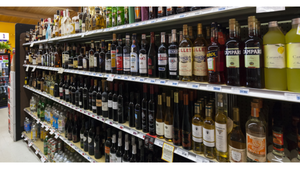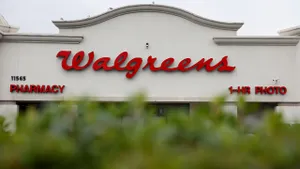Rooted in community
A diverse offering of brands and promotions that cater to each local community keeps Tops Friendly Markets at the pinnacle of the retail game.
January 1, 2018
A diverse offering of brands and promotions that cater to each local community keeps Tops Friendly Markets at the pinnacle of the retail game.
A "house of brands” is how the Tops Friendly Markets team describes its stores offerings. Each location offers something for everyone by stocking a selection of products and brands from national marketers, private label manufacturers and quite possibly the most significant, local producers.
The Tops team takes the “local” concept very seriously. Catering to a wide-range of consumers across metropolitan and rural communities throughout upstate New York, northern Pennsylvania and Vermont is not an easy task. Each store must offer the brand diversity and promotional strategy the chain is known for, while adding its own community flair.
To succeed in such varied markets, the company builds each store from a set of core values and strategies: a promotional strategy that focuses on everyday value, outstanding customer service and consistent store format and cleanliness.
Shoppers know what to expect at a Tops store, says Kevin Darrington, COO. “They know the gas program is in play if a station is around, their shopper loyalty card will be accepted, promotions will be available; they know the store will have the same philosophy on the types of products offered and their quality,” he says.
Even the chain’s smaller footprints in rural locations with a scaled down number of SKUs—ranging from 10,000 to 30,000 square feet—offer the same product variety. The key elements come first and foremost: fresh meat, fresh produce and wellness elements. It is the things on the periphery that are important to consumers and are tailored for each community, says John Persons, executive vice president of sales, marketing and merchandising.
“We merchandise the store to the geographic area. For example, we will merchandise a store in a resort town in the Finger Lakes region of New York differently than a first-ring suburb of Buffalo or Rochester,” says Persons. Offering value to a community is built into the Williamsville, N.Y.-based company’s vision statement: “Your friendly neighborhood store that has what you want, while saving you time and money.”
No one understands each location’s consumer base better than the store team itself. Store managers have a high level of autonomy to source products and partner with local businesses. Many individual Tops locations, as a result, have one-to-one partnerships with local specialty shops, such as the one between Platter’s Chocolates in North Tonawanda, N.Y. and the local Tops or Anchor Bar and the Buffalo locations.
Sitting in the midst of a rich agricultural region, the term �“local” accounts for more than just the mom-and-pop shops. Upstate New York is home to a number of nationally distributed brands. Chobani calls Norwich, N.Y. its home; Cheerios are packaged around the corner from Tops’ headquarters; and the state’s numerous creameries are plentiful in the dairy cooler.
“All of our milk is local. Everything we sell under our brand and a name brand is all local milk, fresh from the farm to our customers,” says Persons, adding that New York is one of the largest dairy states in the country.
However, nothing compares to the produce selection; during the summer, close to 15-20% of produce offerings are locally grown—sometimes as much as 30%, say the chain’s top executives. “When we talk local, one of the first things we mention is the relationships we have with our produce growers and what we do for homegrown product,” adds Persons. From the beginning of the summer through the end of apple season, Tops features local farmers in produce departments and in their circulars, sharing information about their farms and families.
“As a company, we carry a lot of variety. So it is a lot easier to get on our shelves because we are more comfortable bringing in new SKUs, and we are more open to trying something from the local neighborhood,” says Darrington. “If you look at pasta sauce, you will see pasta sauce from local restaurants here in town. It doesn’t play outside this market but it does play very well in this market.”
Brands for everyone
The team views its flexibility to tailor both local offerings and store size as a competitive advantage in its marketplace, which includes the large-format chains Wegmans and Walmart Supercenter, as well as a number of independent grocery stores, dollar and club store chains.
Tops differentiates itself against the store-brand focused chains in the marketplace by staying true to its “house of brands” strategy that includes both national and private label lines. “When you look at Tops stores’ square footage compared to our two biggest competitors, Wegmans and Walmart, we are on average roughly half the size; but if you look at the number of SKUs, we offer almost twice as much as them,” says Darrington.
The second layer of its competitive strategy is to focus on promotions. It takes hold through a number of avenues, but none is more prominent than the weekly circular that caters to each specific store. The circular offers something for everyone, say officials, and retains a strict format so consumers always know where to look for what they want.
Perishables items always receive front and back page space, and national brand values receive special call-outs on the front page. Its broad array of value also features a meal deal that when a specific product, such as a protein, is purchased the consumer can receive up to eight items free. There are also additional discounts for the fuel program.
Persons adds that the team believes the circular on the street every week is what Tops’ customers are looking for. “Wegmans, Walmart and the value players use an ‘everyday low price, low promotion, heavy private or store brand’ market strategy. We have more relationships with the national brand vendors than anyone else in our market,” he notes.
That should not undermine the company’s private brand offerings. Through its own branding and partnership with Topco Associates, shoppers can find private label options across all categories that contribute to the equation of “everyday value.” Private label penetration is approximately 20%, note officials, adding that the Tops SKU is normally the first or second highest sold SKU in each category. “Our store brands typically match in quality with the number one national item. “Our store brand compares to the market leader, so in the instance of ketchup, it would be Heinz,” notes Darrington.
To build upon the element of “everyday value,” last year the company introduced its Price Lock Guarantee. The pricing scheme offers discounts for an 8-week period, usually on seasonal products. “During the end of the year we offered deals on holiday relevant items, and now we are focused on the ‘new year, new you’ trend. It gives customers who like everyday pricing an additional option,” says Darrington.
This targets national brands and Tops private label offerings, which run the gamut of the store. Some labels include Tops for the bulk of store offerings; Full Circle for natural and organic products; TopCare in the HBC categories; Paws pet care; and a number of others. In line with national trends, the Full Circle natural and organic line has become very popular. Responding to the excellent response, the store has rolled it out to every one of its stores throughout the organization.
Offering a wide variety also helps Tops gain points with the growing Millennial generation. They want choices—and that is what the chain offers. Being in a less trend-setting region gives the store the benefit of learning from the trial-and-error happening in the metropolises and their national vendors. “We know this region inside-out and backwards. That is where our national partnerships really assist us because they see what happens in places like New York City or Los Angeles,” says Darrington.
Tops is leading the way in connecting with this tech-savvy generation. For its shoppers who are not into reading circulars, the store has a smartphone app offering electronic coupons that users can connect to their Tops BonusPlus account that are then automatically applied at the register. This, in addition to the Tops website, targets those consumers who are “more comfortable with technology and offers a way to connect with that person of interest,” says Darrington.
Homegrown
Whatever the method of communication, the message is the same: Tops Friendly Markets is the “neighborhood grocery store.” Being part of the local communities is less of a business strategy than it is a way of life for the Tops team.
Feeding the hungry and improving the lives of children are the two pillars guiding the company’s charitable efforts, but the company’s sponsorships run the gamut from food events like the Taste of Buffalo to a number of sports teams—the Buffalo Sabres, Syracuse University athletic teams to local Little Leagues, to name a few.
True to those pillars, the store supports numerous hunger programs, including local food banks and Meals on Wheels, and the Women and Children’s Hospital of Buffalo. This bleeds into education, such as an in-school NuVal education program and junior achievement in all its marketing areas.
“We believe it is our obligation as an entity and a good corporate citizen to help educate and improve the lives of children in any way we can,” says Darrington, adding that a number of corporate officials sit on the boards of local charities. “We are not special; everybody does it. It is just the fabric of who we are and being part of the community.”
Snowed in
When the rest of the country was boarding airplanes and preparing turkey dinners the week before Thanksgiving, Buffalo residents were digging themselves out of record-breaking snowfall. The storm dumped close to eight feet of snow in some areas, bringing a region accustomed to massive snowfall to a halt. Many residents were stranded in their homes and in their cars; the lucky ones were stuck at Tops Friendly Markets.
Despite six Tops Friendly Markets being located in the most severely impacted area, and a few more hit to a lesser degree, none of the stores closed their doors. “The store teams walked or rode snowmobiles to work and then worked around the clock taking care of customers and preparing for the mad rush that would come once the areas were plowed,” says John Persons, executive vice president of sales, marketing and merchandising.
Proud of the 24-hour policy featured in most locations, Tops officials recognized local residents’ need for food, safety and in some cases, a place to sleep. “Ten of our stores were taking people in; some had two to three people, some had 40-50. We cooked up steaks. We brought out blankets for them. We popped popcorn and played movies. Our organization pulled together to support the stores and the community,” says Persons. “We even had the CEO Frank Curci driving product to the stores.”
Consumers were touched by the support the Tops store teams offered the local communities, officials say, noting all the positive messages they received from customers. “It was heartwarming to read the notes we received; people were emotional about the fact that we were there to help them,” says Persons.
Spreading the nutritional word
Health and nutrition influences consumer-purchasing decisions on almost a shopping trip-by-shopping trip basis. To make it easier for shoppers to recognize the nutritional value of the products on the shelves, Tops Friendly Markets features the NuVal Nutritional Scoring System.
The food scoring system assigns a number from one to 100 to a product; the higher the number, the more nutritional value it offers. The chain enlisted the program because they wanted to offer consumers more choice. “We wanted to give them choices in assortment, choices in local versus non-local, choices in what to eat and choices for trading up to a more nutritional option,” says Kevin Darrington, COO. “We do not want to preach to consumers about what they should be eating, but rather educate them on how they can trade up; and NuVal is a phenomenal way to do that.”
Tops customers can find NuVal scores posted with every non-perishable item and highlighted on a sign in the perishables department. More so, the circular features a “healthy” section on the back that suggests a healthy trade-up idea.
Tops officials took it a step further and hired a community outreach coordinator to educate middle-school students about healthy eating options. In the first year, Tops reached about 10,000 students speaking to them about healthy options, playing physical fitness games and teaching them about going to the local grocery store and how to be healthier at their own choice and speed.
The NuVal Nutritional Scoring System, a joint venture by Topco Associations and Yale University-affiliated Griffin Hospital, has scored more than 70,000 products on a model that takes more than 30 different nutrients and nutrition factors into account. “The percentage of products scored keeps getting higher. We used to have to wait six months for something to be scored but now national brands are buying into the program and products are being scored before they come out,” adds Darrington.
About the Author
You May Also Like




